Last March in my balcony, cherry tomatoes were just blushing. At 6:30am, a palm squirrel ran along the railing, took one proud bite from the ripest fruit, and dropped it like a bad samosa.
By the time tea was done, three more tomatoes had single bite marks on the floor. Squirrels are quick scouts at dawn and dusk.
They are bold on balcony railings and walls. In summer heat, they get thirsty. They look for any moisture, including juicy tomatoes. They’ll return daily once they learn the route.
Here is the tested guide used in city balconies, terrace gardens, and areas near coconut trees. It helps keep squirrels away from tomato plants in a safe and humane way, adjusted for each season.
Understand squirrel habits in Indian homescapes
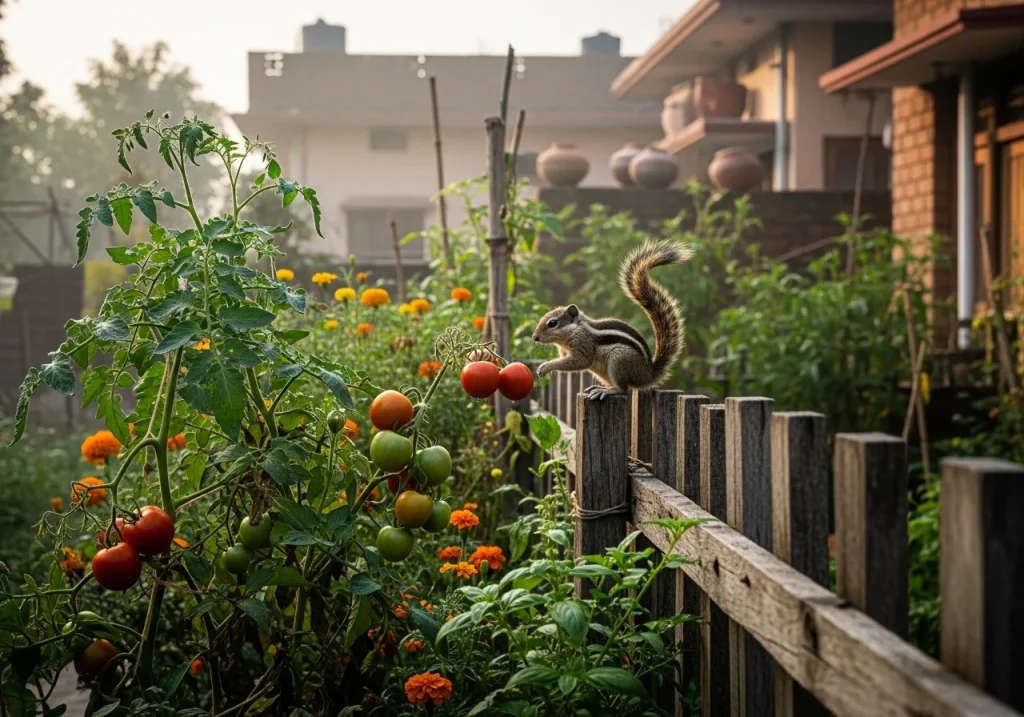
- Squirrels explore at dawn and dusk. They run confidently on balcony rails, wires, and walls. They taste ripe fruits and often drop them after a bite.
- In heatwaves, mammals seek water; offering a water source away from plants reduces fruit pecking driven by thirst.
- They learn paths via “bridges” like crates against walls or low branches over pots; remove these ladders and jump routes promptly.
Physical protection first: nets, hoops, sleeves, guards

- Netting cage: Use 1–1.5 cm mesh nylon or fishnet in green/white. Build a light frame with ½-inch PVC or bamboo, tie with coconut rope, and peg the base with bricks so there are no gaps.
- Height and access: Make hoops or tunnels taller than the plant’s expected height. Keep netting away from the leaves. Add a clipped or zipped entry for easy watering and pruning.
- Fruit sleeves: For clusters that are close to ripening, use organza gift bags or malmal pouches. Slip them over the bunches and tie them loosely. This helps prevent “one-bite” losses while still letting air flow.
- Trunk/ground guards: Where plants grow near climb points (stakes, treelets), use plastic bottle collars or wire mesh rolls 30–40 cm high to block quick climbs.
Tip: For a stronger terrace enclosure, use a wood or PVC frame with 1-inch chicken wire. Bury or weigh down the bottom edge to keep animals from sneaking under.
Deterrents that work: smells, tastes, visuals, sounds

- Change smells so squirrels don’t get used to them: Use a chili-garlic-ginger spray. Apply peppermint oil on cotton. Place vinegar-camphor cotton balls in holes. You can also mix neem oil with a few drops of mild soap to help it spread.
- Taste barriers: Capsaicin-based sprays deter feeding. Reapply after rain, and every 48–72 hours in hot, dry spells; avoid spraying flowers to protect pollinators.
- Visual movement: Hang old CDs or foil ribbons that glint in sun; place owl/kite silhouettes near terrace edges. Shift positions weekly so they don’t get used to them.
- Gentle sounds: Wind chimes or a pebble-in-can rattle line near the rail can spook without disturbing neighbors. Avoid loud, constant sounds in apartments.
Safety note: These natural deterrents use smell and taste. They are non-lethal and help keep squirrels away. When used wisely on surfaces, they do not harm pets or birds. Do not apply them directly on animals.
Habitat tweaks and harvest timing
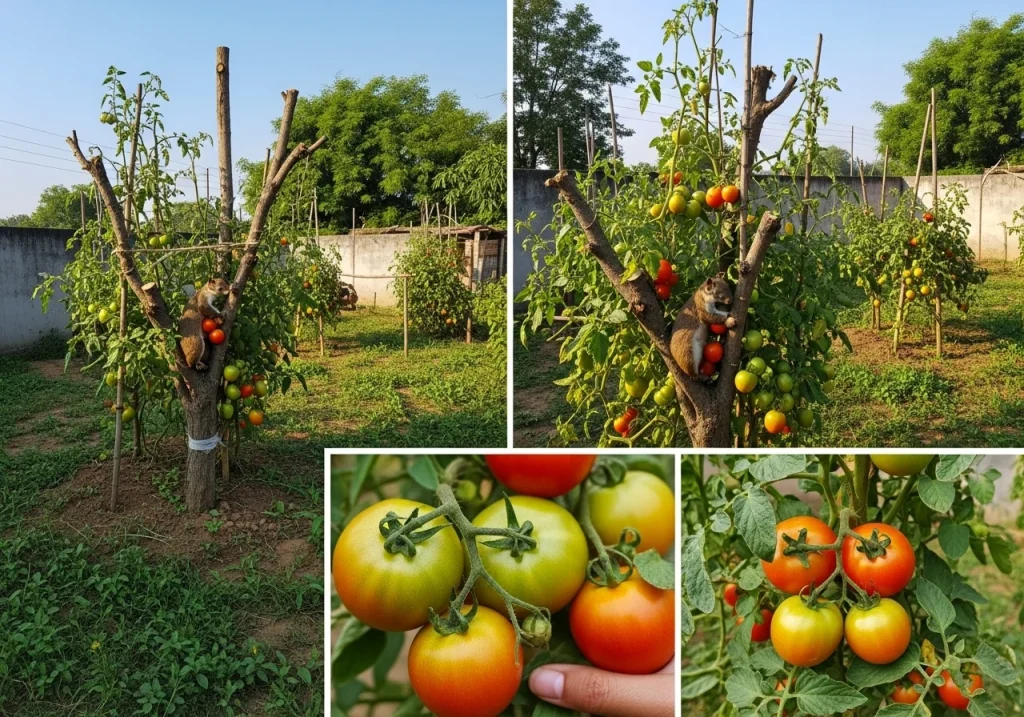
- Water bowl decoy: Keep a shallow water bowl 5–10m away from tomato plants (corner of terrace/yard). In summer, this cuts thirsty pecking and reduces balcony raids.
- Remove bridges: Trim side branches near pots, move stacked crates from walls, and avoid placing shelves that create runway shortcuts to plants.
- Harvest at blush: Pick fruits when they first show color. Ripen them indoors in paper bags. The taste stays great, and you lose less fruit when you pick them early.
Indian Jugaad: low-cost, quick fixes
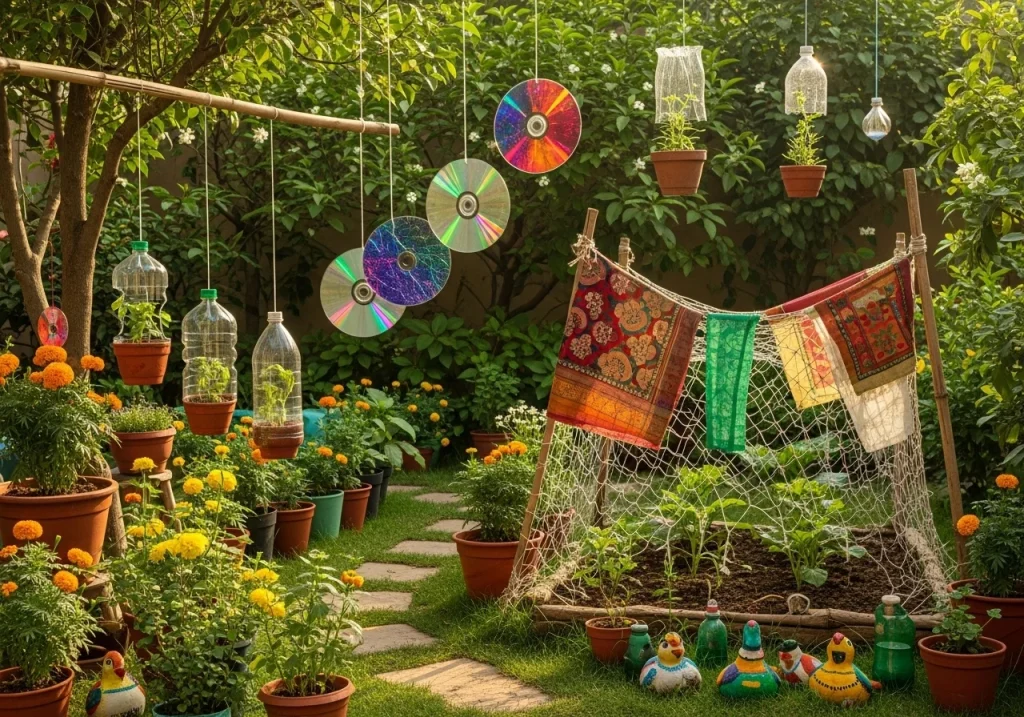
- Old saree net, nylon dupatta, or fishnet as cage fabric; tie with coconut rope or twist ties.
- Bamboo stakes or leftover PVC pipes for hoops; peg base with bricks/tiles.
- Malmal cloth or organza gift bags for fruit sleeves; cheap, breathable, reusable.
- Chili-garlic spray and a pinch of turmeric add color. Use camphor or peppermint cotton in yogurt cups with holes. Hang these on stakes and refresh them often in summer.
- Old CDs on strings for sparkle; shift weekly.
Seasonal tactics that match Indian weather

- Summer (scarcity and heatwaves): Provide water bowls. Harvest fruits when they are slightly ripe. Use stronger chili or peppermint scents. Reapply sprays every 2 to 3 days. This is important because of evaporation and UV rays.
- Monsoon (fruit cracking attracts bites): Use nets and fruit sleeves together. Reapply repellents after each rain. Check for fungus on wet fruits and stems where nets touch.
- Winter (fewer raids, but steady): Keep nets up. Rely on early harvest and strong barriers. You need fewer spray cycles because scents last longer in cool weather.
Safety and Ethics

- No glue traps or poisons—unsafe for children, pets, birds, and bees, and not needed if barriers and routines are solid.
- Keep sprays off flowers; wash fruits before eating; place scent cups out of pet reach and away from direct nibbling spots.
Quick troubleshooting
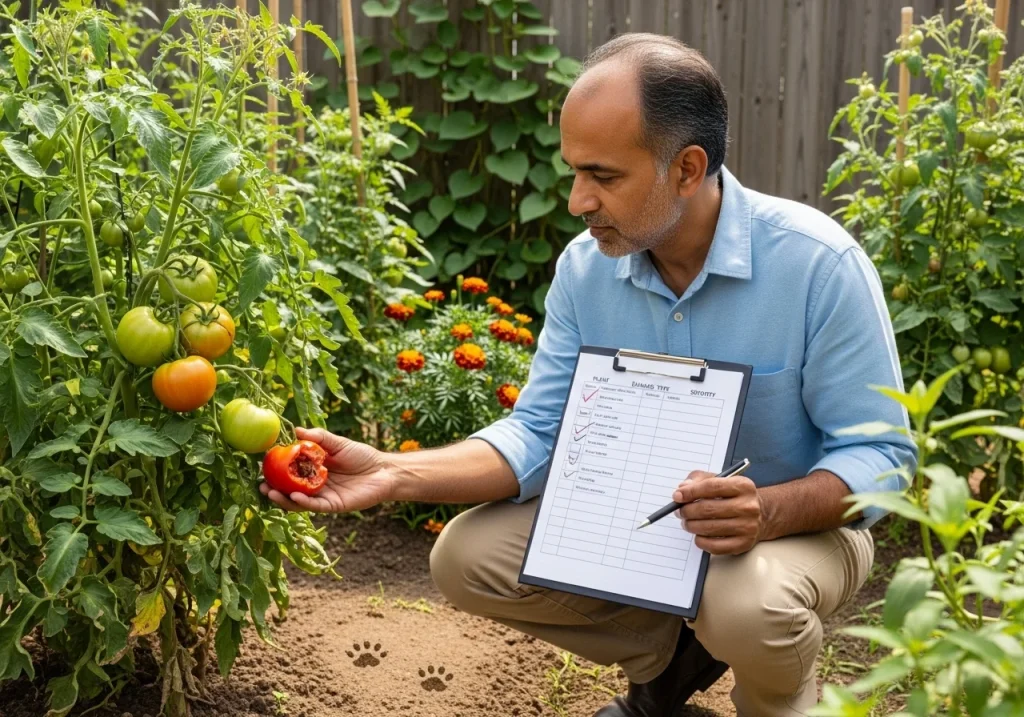
- “Net on but still losing fruit?” Check for gaps at ground level, railing edges, or where the net touches a wall/pipe. Weight the base with bricks and clip overlaps.
- “Did the repellent wear off?” Reapply it after rain or every 48 to 72 hours in heat. Switch between chili-garlic and peppermint/vinegar-camphor to keep the smell fresh.
- “Only ripe ones targeted?” Start harvesting at first blush and finish ripening indoors.
Weekly checklist

- Inspect and re-tie nets and ropes; add bricks where wind lifts edges.
- Refresh repellents; rotate smells; keep cups topped up.
- Trim jump routes; move crates/shelves that act as ladders.
- Harvest on time at blush; clean fallen fruits to avoid attracting repeat visits.
Helpful Next Reads
- Tomato Container Watering: Avoid Overwatering.
- The Right Pot Size to Grow Tomatoes Without Stunted Roots.
- Home Remedies For Tomato Plant Fungus: What Works?
- DIY Planting Tomato Seeds From Tomatoes.
Ready to stop the one-bite drama? Set up a simple net-and-hoop cage today. Sleeve the ripening clusters. Place a water bowl nearby. Start harvesting when they blush.
A calm, consistent routine wins this battle—quietly and humanely—while the tomatoes keep coming.

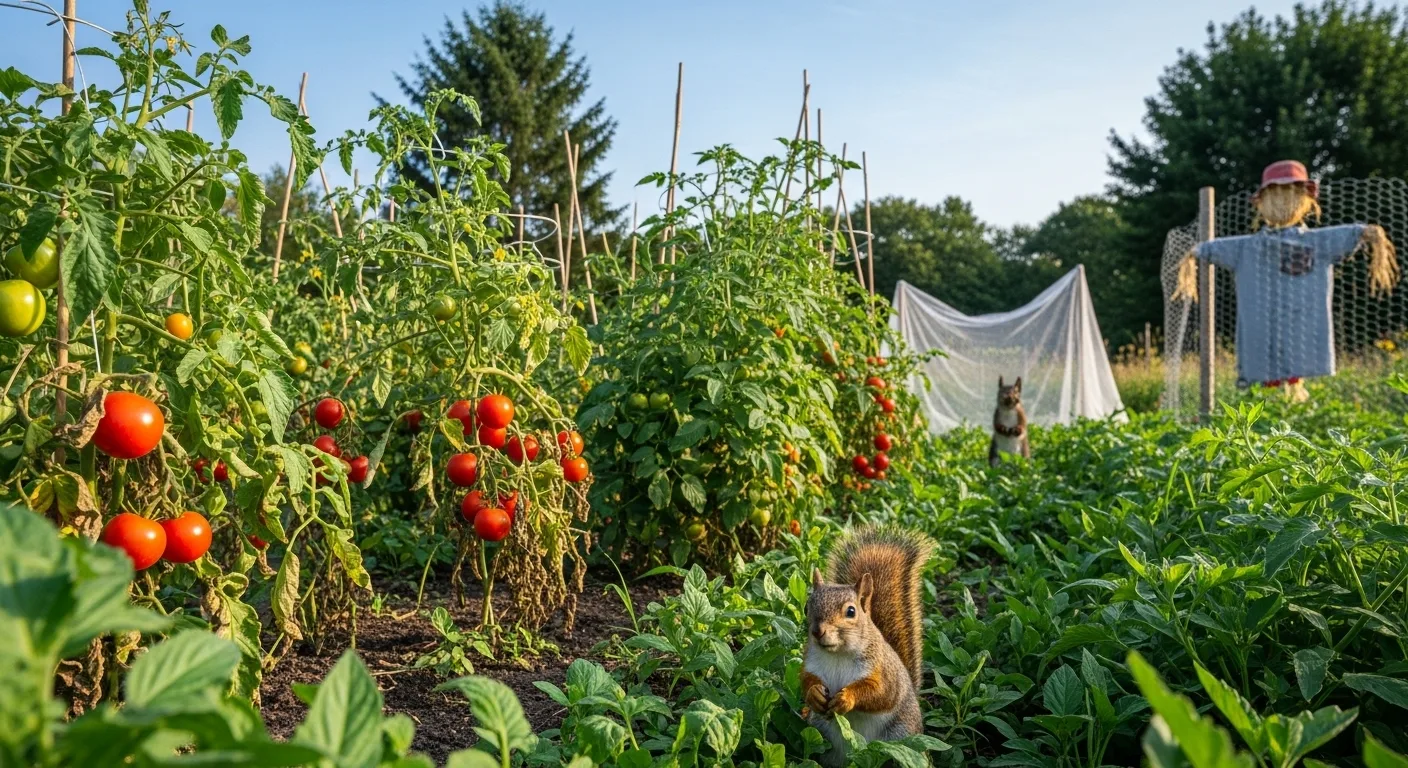


Leave a Comment